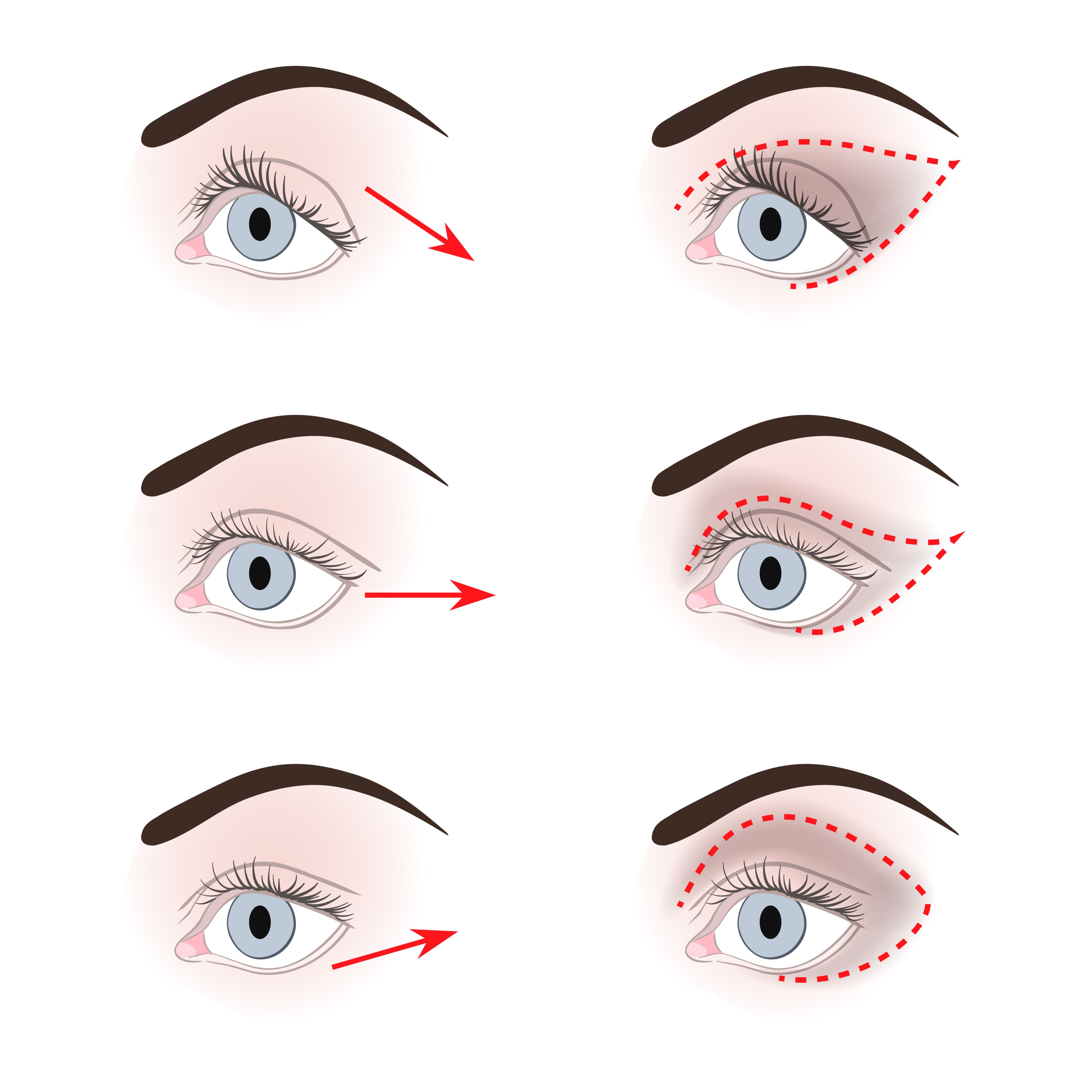Cosmetic eye surgery that creates a more almond-shaped eye is called almond eye surgery, lateral canthoplasty, or Mongolian fold surgery. In places like Turkey, where the operation is often used, the goal is to give patients the impression of being younger and more attentive.
The goal of this article is to provide a detailed guide to almond eye surgery, covering topics such as alternatives to surgery, different types of surgery, treatment candidate requirements, surgical technique, pre- and post-operative care, risks and precautions, and recovery time. We hope that this data will be useful in determining whether or not almond eye surgery is the correct choice for you.
Almond eye surgery, also called Asian eyelid surgery, is a cosmetic procedure that enhances the eyes' appearance. There are different types of almond eye surgery, each targeting a specific cosmetic issue.

Almond eye surgery can be categorized as full incision and non-incisional. Full incision surgery involves removing excess fat and tissue by making an incision along the eyelid's natural crease, suitable for severe drooping or those seeking a noticeable change. The non-incisional approach creates a crease without cutting the skin, causing less pain and a shorter recovery time, suitable for mild drooping or a more subtle transformation.
Double eyelid surgery is another type of almond eye surgery, preferred by patients of Asian descent with monolids or low eyelid creases, creating a natural-looking crease.
Consult with a board-certified cosmetic surgeon before undergoing almond eye surgery.
The following table provides a comparison of the different types of almond eye surgery:
| Type of Surgery | Procedure | Benefits | Risks |
| Full Incision Method | An incision is made along the natural crease of the eyelid to remove excess fat and tissue | Creates a more dramatic change and is ideal for patients with more significant eyelid sagging | Longer recovery time, scarring, and risk of complications such as infection |
| Non-Incisional Method | A fold is created in the eyelid without making any incisions | Less invasive and requires less downtime than the full incision method | May not be suitable for patients with more severe sagging or those who desire a more dramatic change |
| Double Eyelid Surgery | Creates a natural-looking crease in the eyelid to enhance the appearance of the eyes | Ideal for patients of Asian descent who have monolids or low eyelid creases | May not be suitable for patients with more significant eyelid sagging or those who desire a more dramatic change |
Almond eye surgery is a specialty of several of Turkey's top plastic surgeons and clinics. You should do your homework and pick a clinic or surgeon that has a history of success and happy patients.
Almond eye surgery can provide a raised and more prominent eye appearance, but non-surgical options exist for those who prefer not to undergo surgery. Also there are many other surgical options to achieve different eye shape outcomes. If you are not sure about which procedure suits your needs you can read our ''Different Eye Shape Correction Procedures'' article to have an idea about the surgical procedures.
Injectable alternatives such as Botox, fillers, and thread lifts can raise the skin and muscles around the eyes or elevate the skin and muscles under the eyes. During a thread lift, dissolvable threads are used to tighten the skin around the eyes. These non-invasive treatments can be effective but may not produce as striking or long-lasting results as surgery.
Almond eye correction surgery is the only permanent option for significant eye appearance alteration. Consult with a trained eye surgeon in Turkey to learn more about your options and make an informed decision based on your individual circumstances.
Table: Surgical vs. Non-Surgical Options for Almond Eye Correction
| Surgical Almond Eye Correction | Non-Surgical Alternatives | |
| Results | Permanent, significant change | Temporary, subtle results |
| Downtime | Several weeks of recovery time | Minimal downtime |
| Procedure | Surgical procedure | Injectables or thread lifts |
| Cost | Typically more expensive | Typically less expensive |
| Longevity | Long-lasting | Temporary |
Each individual has their own set of concerns and desired outcomes, so it's possible that a hybrid approach combining surgery and non-surgical methods might be the best option. An experienced eye surgeon in Turkey can advise you on the best course of action and provide a tailor-made treatment plan.
 Summary
Summary Overall, almond eye surgery is a popular cosmetic procedure in Turkey that produces a more exotic eye shape, and it is ideal for those who want to appear younger or have drooping eyelids. While less invasive alternatives exist, the benefits of surgery tend to last longer. It's important to carefully consider individual circumstances and choose the most suitable type of surgery. Patients must meet specific criteria and follow pre-operative instructions closely to ensure a successful outcome and minimize the risk of complications. Following the procedure, there may be some discomfort and swelling, but most patients can resume their normal activities within a couple of weeks. With careful consideration and a qualified surgeon in Turkey, almond eye surgery can be a life-changing option with minimal downtime.
Almond eye surgery is a cosmetic procedure that aims to change the appearance of the eyes to make them look more almond-shaped. While the procedure is often chosen for aesthetic reasons, there are some cases where it may be considered a functional necessity. Candidates for the surgery may include those with eyelids that obscure their vision, or those with asymmetrical eyes that cause emotional distress.

Cosmetic reasons for undergoing almond eye surgery include wanting to achieve a more youthful or attractive appearance, correcting asymmetrical eyes, or enhancing natural eye shape. Functional reasons for undergoing the surgery include improving vision by correcting eyelids that obstruct the line of sight, or repairing drooping eyelids caused by aging or injury.
It is important to note that not everyone may be a suitable candidate for almond eye surgery. Patients should be in good health, have realistic expectations for the procedure, and have no underlying medical conditions that may complicate the surgery or the recovery process. The procedure is generally considered safe, but it is important to consult with a qualified surgeon to determine if it is the right choice for you. If you are interested in having almond eye surgery in Turkey, you can read our blog post about almond eye surgery in Turkey to have detailed information before you make your decision.
Table 1: Examples of Cosmetic and Functional Reasons for Almond Eye Surgery
| Reasons for Almond Eye Surgery | Cosmetic | Functional |
| Desire for more youthful or attractive appearance | ✓ | |
| Correcting asymmetrical eyes | ✓ | |
| Improving vision by correcting obstructed line of sight | ✓ | |
| Repairing drooping eyelids caused by aging or injury | ✓ |
Table 2: Qualifications for Almond Eye Surgery
| Qualifications for Almond Eye Surgery | Yes | No |
| Good overall health | ✓ | |
| No underlying medical conditions that may complicate surgery or recovery | ✓ | |
| Realistic expectations for the procedure | ✓ | |
| Willingness to follow pre-operative and post-operative instructions | ✓ | |
| Pregnant or nursing | ✓ | |
| Chronic eye conditions or diseases | ✓ | |
| Uncontrolled high blood pressure | ✓ | |
| Active infections or illnesses | ✓ |
If you are considering almond eye surgery, it is important to be aware of the requirements that you must meet to undergo the procedure. These requirements may vary depending on the surgeon and clinic you choose, but here are some general guidelines that most clinics in Turkey adhere to:
It is important to note that these requirements are not exhaustive, and your surgeon may have additional requirements based on your individual needs and medical history. It is crucial to discuss any concerns or questions you may have with your surgeon before undergoing the procedure.

To prepare for almond eye surgery in Turkey, there are important steps to take:
Following these guidelines can help ensure a smooth almond eye surgery experience in Turkey.
The purpose of lateral canthoplasty, often known as "almond eye surgery," is to lengthen the eye sockets in order to give the eyes a more almond shape. The specifics of how this operation is carried out depend on the condition being treated and the preferences of the patient. Here, we'll break down the anesthetic choices that can be made prior to, during, and after your almond eye surgery.

Choices in Anesthesia
The patient is put to sleep with anaesthetic before surgery so they don't feel anything throughout the operation. A variety of anesthetic choices are available for almond eye surgery.
An injection of local anesthetic into the region surrounding the eyes will numb it while yet allowing the patient to maintain consciousness.
When a patient receives general anesthesia, they are put to sleep and remain unconscious during the procedure.
Performing Surgery
Almond eye surgery procedures may differ from patient to patient and physician to surgeon. However, here are the fundamental stages of the process:
Patients are provided post-operative clinic time to rest and recuperate from their procedures. Patients should expect to get post-operative care instructions from their surgeons and return home the same day.
The operation takes around an hour on average, and patients may expect to see their ultimate results in a matter of weeks. To guarantee adequate healing throughout the potentially lengthy recovery time (a few weeks or more), it is essential to strictly adhere to the surgeon's recommendations.
Almond eye surgery in Turkey is conducted by highly skilled doctors who employ cutting-edge methods and equipment. The country is well-known for its cutting-edge medical facilities, which provide a variety of cosmetic services at reasonable costs.
Almond eye surgery, like any surgery, carries some risks and potential complications. However, most patients experience no significant problems during or after the procedure. It is important to understand the potential risks and complications associated with almond eye surgery so that you can make an informed decision about whether or not to undergo the procedure.
Some common risks of almond eye surgery include:
In addition to these risks, there are also risks associated with anesthesia, such as an allergic reaction or complications related to pre-existing medical conditions. However, your surgeon and anesthesia team will take steps to minimize these risks, such as performing a thorough medical evaluation prior to the procedure.
It is important to discuss any concerns you have about the risks of almond eye surgery with your surgeon prior to the procedure. By fully understanding the potential risks and complications, you can make an informed decision about whether or not to undergo the surgery.
Almond eye surgery, like any surgical procedure, carries some risks and complications. However, there are precautions that clinics and surgeons take to minimize these risks and ensure patient safety.
Before the surgery, the clinic will conduct a thorough medical evaluation of the patient to ensure that they are a suitable candidate for the procedure. They will also provide the patient with pre-operative instructions to follow in the days leading up to the surgery to prepare their body for the procedure.
During the surgery, the surgeon will take steps to minimize the risk of bleeding and infection. They will use sterile instruments and perform the procedure in a sterile environment to minimize the risk of infection. Additionally, they will carefully monitor the patient's vital signs throughout the procedure to ensure that they are stable.
After the surgery, the clinic will provide the patient with detailed post-operative instructions to follow to ensure that they heal properly and minimize the risk of complications. The patient may need to avoid certain activities or take medications to manage pain or prevent infection.
In Turkey, clinics and surgeons take patient safety very seriously and are committed to providing the highest quality care. They follow strict safety protocols and use the latest technology and techniques to ensure that patients receive the best possible care.
After undergoing almond eye surgery, it is important to give your body ample time to heal properly. The recovery period will vary from person to person, but generally, it can take up to two weeks to fully recover. Here are some things to expect during your recovery:
It is important to follow your surgeon's post-operative instructions carefully to ensure a smooth recovery. If you experience any unusual symptoms such as severe pain, vision changes, or excessive swelling, contact your surgeon immediately. You can find more information about recovery period and tips after almond eye surgery in our websites blog section.
 Özet
Özet Özet olarak, badem göz ameliyatı, daha egzotik bir göz şekli oluşturmayı amaçlayan bir prosedürdür. Daha genç görünmek isteyenler veya düşük göz kapakları olanlar için idealdir. Daha az invaziv alternatifler mevcut olsa da, badem göz ameliyatının faydaları daha uzun sürelidir. Bireysel koşulları dikkatlice değerlendirmek ve en uygun ameliyat tipini seçmek önemlidir. Başarılı bir sonuç elde etmek ve komplikasyon riskini en aza indirmek için hastalar belirli kriterleri karşılamalı ve ameliyat öncesi cerrah tarafından verilen talimatları yakından takip etmelidir. İşlemden sonra bir miktar rahatsızlık ve şişlik görülmesi normaldir. Çoğu hasta birkaç hafta içinde normal aktivitelerine dönebilir.
>